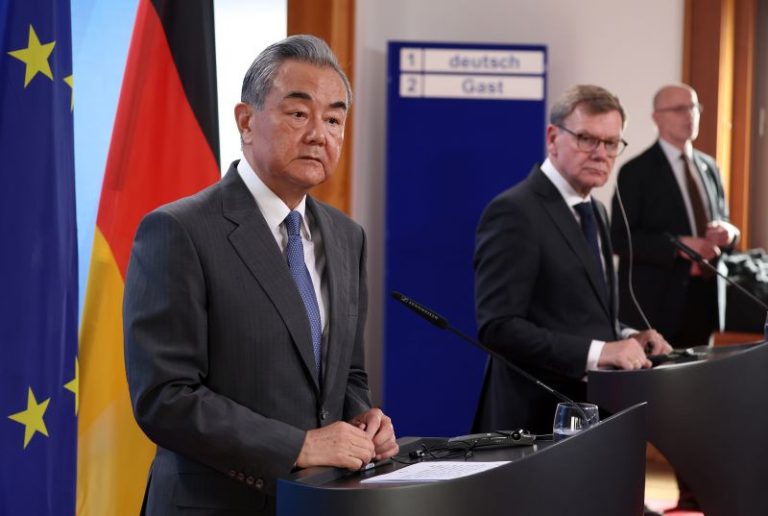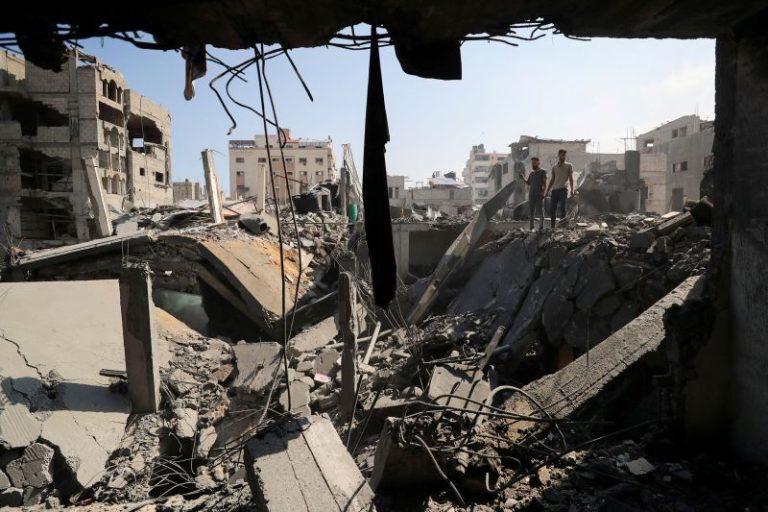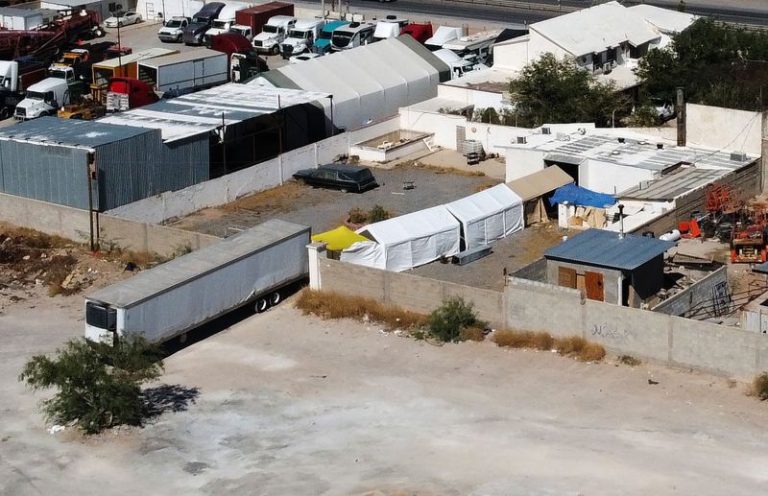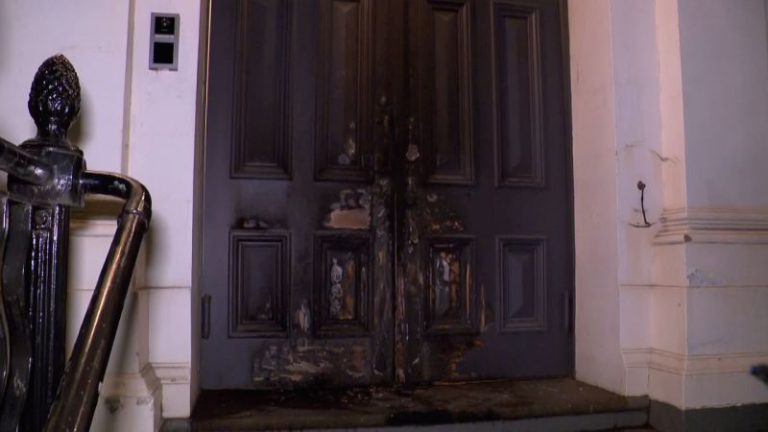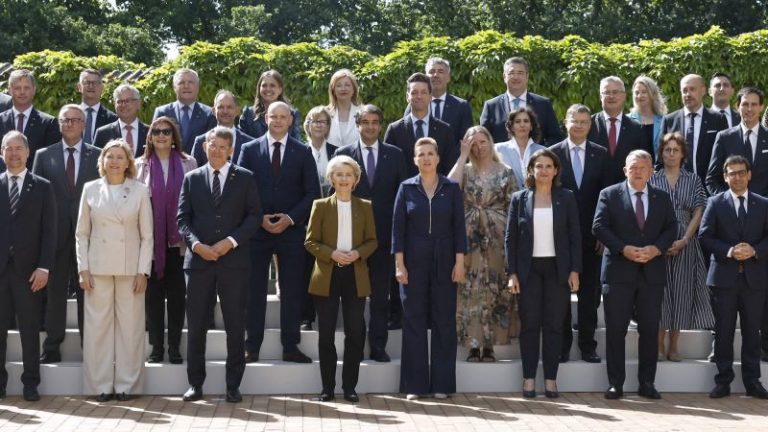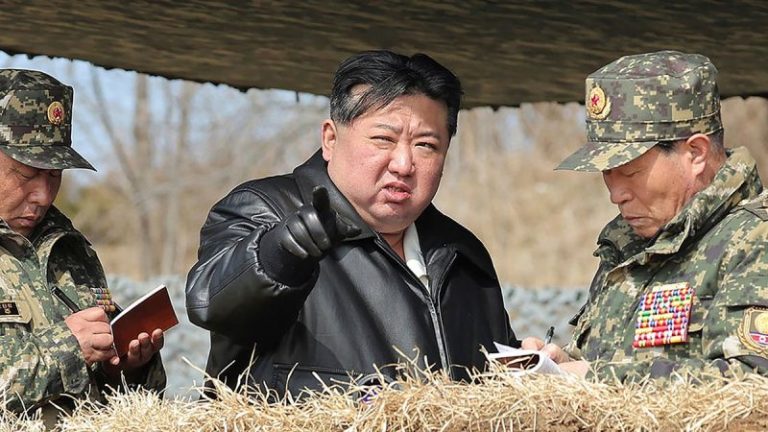For much of the past century, the Dalai Lama has been the living embodiment of Tibet’s struggle for greater freedoms under Chinese Communist Party rule, sustaining the cause from exile even as an increasingly powerful Beijing has become ever more assertive in suppressing it.
As his 90th birthday approaches this Sunday, the spiritual leader for millions of followers of Tibetan Buddhism worldwide is bracing for a final showdown with Beijing: the battle over who will control his reincarnation.
On Wednesday, the Dalai Lama announced that he will have a successor after his death, and that his office will have the sole authority to identify his reincarnation.
“I am affirming that the institution of the Dalai Lama will continue,” the Nobel Peace laureate said in a video message to religious elders gathering in Dharamshala, India, where he has found refuge since Chinese communist troops put down an armed uprising in his mountainous homeland in 1959.
The cycle of rebirth lies at the core of Tibetan Buddhist belief. Unlike ordinary beings who are reborn involuntarily under the influence of karma, a revered spiritual master like the Dalai Lama is believed to choose the place and time of his rebirth – guided by compassion and prayer – for the benefit of all sentient beings.
But the reincarnation of the current Dalai Lama is not only pivotal to Tibetan Buddhism. It has become a historic battleground for the future of Tibet, with potentially far-reaching geopolitical implications for the broader Himalayan region.
“He has been such a magnet, uniting all of us, drawing all of us,” said Thupten Jinpa, the Dalai Lama’s longtime translator, who assisted the leader on his latest memoir, “Voice for the Voiceless.”
“I often say to the younger-generation Tibetans: We sometimes get spoiled because we are leaning on this very solid rock. One day, when the rock goes away, what are we going to do?”
In that memoir, published this year, the Dalai Lama states that his successor will be born in the “free world” outside China, urging Tibetans and Tibetan Buddhists globally to reject any candidate selected by Beijing.
But China’s ruling Communist Party insists it alone holds the authority to approve the next Dalai Lama – as well as all reincarnations of “Living Buddhas,” or high-ranking lamas in Tibetan Buddhism.
At the heart of this clash is the ambition of an officially atheist, authoritarian state to dominate a centuries-old spiritual tradition – and to control the hearts and minds of a people determined to preserve their unique identity.
Beijing brands the current Dalai Lama a dangerous “separatist” and blames him for instigating Tibetan protests, unrest, and self-immolations against Communist Party rule.
The Dalai Lama has rejected those accusations, insisting that he seeks genuine autonomy for Tibet, not full independence – a nonviolent “middle way” approach that has earned him international support and a Nobel Peace Prize.
To his Tibetan followers, the self-described “simple Buddhist monk” is more than a spiritual leader or former temporal ruler of their homeland. He stands as a larger-than-life symbol of their very existence as a people, defined by a distinct language, culture, religion and way of life that critics say Beijing is trying to erase.
But the Dalai Lama’s death could also pose a new dilemma for the Communist Party. Some younger Tibetans in exile view his “middle way” approach as overtly conciliatory toward Beijing. In the absence of a unifying figure to guide the exile movement and temper its more radical factions, demands for full Tibetan independence could gather momentum.
The 14th Dalai Lama, Tenzin Gyatso, was only 15 when communist troops – having won the Chinese civil war – marched into Tibet in 1950 to bring the remote Himalayan plateau under the control of the newly founded People’s Republic.
The Communist Party claims it “liberated” Tibet from “feudal serfdom” and reclaimed a region it says has been part of China for centuries. But many Tibetans resented what they saw as the brutal invasion and occupation by a foreign army.
The resistance culminated in an armed uprising with calls for Tibetan independence in March 1959, sparked by fears that Chinese authorities were planning to abduct the Dalai Lama. As tensions mounted and the People’s Liberation Army fired munitions near the Dalai Lama’s palace, the young leader escaped the capital Lhasa under cover of night. The Chinese army ultimately crushed the rebellion, killing tens of thousands of Tibetans, according to exile groups, though the exact number remains disputed.
After fleeing to India, the Dalai Lama established a government-in-exile in Dharamshala. Since then, he has come to represent Tibet, said Ruth Gamble, an expert in Tibetan history at La Trobe University in Melbourne, Australia.
“Before the 1950s, the idea of Tibet was much more diffuse – there was a place, there was a state, and there were all of these different communities. But over the years, he’s almost become an abstract ideal of a whole nation,” she said.
The Chinese Communist Party has waged a decades-long campaign to discredit the current Dalai Lama and erase his presence from Tibetan life, while tightening restrictions on religious and cultural practices. The crackdown often intensifies around sensitive dates – especially his birthday – but devotion to the spiritual leader has quietly endured.
“Despite all these years of banning his photos, in every Tibetan heart there is an image of the Dalai Lama there. He is the unifying figure, and he is the anchor,” Jinpa, the translator, said.
It’s a profound emotional and spiritual loyalty that defies the risk of persecution and imprisonment — and one that the Communist Party deems a threat to its authority, yet is eager to co-opt.
Over the years, Beijing has cultivated a group of senior Tibetan lamas loyal to its rule, including the Panchen Lama, the second-highest figure in Tibetan Buddhism after the Dalai Lama himself.
Historically, dalai lamas and panchen lamas have acted as mentors to each other and played a part in identifying or endorsing each other’s reincarnations – a close relationship likened by Tibetans to the sun and the moon. But in 1995, years after the death of the 10th Panchen Lama, Beijing upended tradition by installing its own Panchen Lama in defiance of the Dalai Lama, whose pick for the role – a six-year-old boy – has since vanished from public view.
Beijing’s Panchen Lama is seen as an imposter by many Tibetans at home and in exile. He is often shown in China’s state-run media toeing the Communist Party line and praising its policies in Tibet. Last month, in a rare meeting with Chinese leader Xi Jinping, the Tibetan monk reaffirmed his allegiance to the rule of the Communist Party and pledged to make his religion more Chinese – a tenet of Xi’s policy on religion.
Experts and Tibetan exiles believe Beijing will seek to interfere in the Dalai Lama’s eventual succession using a similar playbook – appointing and grooming a candidate loyal to its rule, with the backing of the state-appointed Panchen Lama and other senior lamas cultivated by the government.
That could lead to the emergence of two rival dalai lamas: one chosen by his predecessor, the other by the Communist Party.
Jinpa, the Dalai Lama’s translator, is unfazed by that prospect.
“Personally, I don’t worry about that, because it’s kind of a joke. It’s not funny because the stakes are so high, but it’s tragic,” he said, referring to Beijing’s likely attempt to appoint its own dalai lama. “I just feel sorry for the family whose child is going to be seized and told that this is the dalai lama. I’m already feeling sad for whoever’s going to suffer that tragedy.”
For his part, the current Dalai Lama has made clear that any candidate appointed by Beijing will hold no legitimacy in the eyes of Tibetans or followers of Tibetan Buddhism.
“It is totally inappropriate for Chinese Communists, who explicitly reject religion, including the idea of past and future lives, to meddle in the system of reincarnation of lamas, let alone that of the dalai lama,” he writes in “Voice for the Voiceless.”
With his characteristic wit and playful sense of humor, he adds: “Before Communist China gets involved in the business of recognizing the reincarnation of lamas, including the dalai lama, it should first recognize the reincarnations of its past leaders Mao Zedong and Deng Xiaoping!”
Tibetan Buddhism reveres its spiritual leader as the human manifestation of the Bodhisattva of Compassion – an enlightened being who, rather than entering nirvana, chooses to be reborn to help humanity. The current Dalai Lama is the latest in a long lineage of reincarnations that have spanned six centuries.
The search for a dalai lama’s rebirth is an elaborate and sacred process. Important clues are the instructions or indications left by a predecessor (it could be as subtle as the direction in which the deceased dalai lama’s head was turned). Additional methods include asking reliable spiritual masters for their divination, consulting oracles, and interpreting visions received by senior lamas during meditation at sacred lakes.
Following these clues, search parties are dispatched to look for young children born after the dalai lama’s death. Candidates are subject to a series of tests, including identifying objects that belonged to the previous incarnation.
But the dalai lama’s reincarnation hasn’t always been found in Tibet. The fourth dalai lama was identified in the late 16th century in Mongolia, while the sixth was discovered about a century later in what is currently Arunachal Pradesh, India.
The current Dalai Lama, born into a farming family in a small village in the northeastern part of the Tibetan plateau, was identified when he was two years old, according to his official biography. He assumed full political power at 15, ahead of schedule, to guide his distressed people as they faced advancing Chinese Communist forces.
If the next dalai lama is to be identified as a young child, as per tradition, it could take some two decades of training before he assumes the mantle of leadership – a window that Beijing could seek to exploit as it grooms and promotes its own rival dalai lama.
“For us, the one recognized by the Dalai Lama, born in exile, is the real one. So as far as the matter of faith is concerned, I think there is no issue. It’s just the politics and geopolitics,” said Lobsang Sangay, the former prime minister of the Tibetan government-in-exile in Dharamshala.
For instance, Beijing could pressure other countries to invite its own dalai lama for ceremonies, said Sangay, now a senior visiting fellow at Harvard Law School.
Tibetan Buddhism is a form of Vajrayana Buddhism – one of the major branches of the faith – which is widely practiced in Mongolia and the Himalayan regions of Bhutan, Nepal and India.
These countries – and to a lesser extent, other nations with large Buddhist populations such as Japan and Thailand – could be forced to choose which dalai lama to recognize, according to Gamble in Melbourne. “Or they may and say: ‘We’re not going to get into it.’ But even that might anger the Chinese government,” she added.
Aware of his own mortality, the Dalai Lama has been preparing the Tibetan people for an eventual future without him. He laid what he sees as the most important groundwork by strengthening the institutions of the Tibetan movement and fostering a self-reliant democracy within the exile community.
In 2011, the Dalai Lama devolved his political power to the democratically elected head of the Tibetan government-in-exile, retaining only his role as the spiritual head of the Tibetan people.
Sangay, who took up the baton as the political leader of the exiled government, said that by making the transition to democracy the Dalai Lama wanted to ensure Tibetans can run the movement and the government on their own, even after he is gone.
“He has specifically said: ‘You cannot just rely on me as an individual… I’m mortal. The time will come when I won’t be there. So it is for the Tibetan people, while I’m here, to transition to full-fledged democracy – with all its ups and downs – and to learn from it and grow, mature and be stronger, moving forward,’” he said.
That goal has taken on added urgency as the Tibetan movement for safeguarding their culture, identity and genuine autonomy increasingly finds itself in a precarious moment.
Under leader Xi Jinping, Beijing has ramped up security and surveillance in its frontier regions, intensified efforts to assimilate ethnic minorities, and rolled out a nationwide campaign to “sinicize” religion – ensuring it aligns with Communist Party leadership and values.
The Chinese government says it has safeguarded cultural rights and religious freedom in Tibet and touts the region’s economic development and significant infrastructure investment, which it says has improved living standards and lifted hundreds of thousands of people out of poverty.
United Nations experts and the Dalai Lama have expressed concerns over what they call an intensifying assimilation campaign by the Chinese government, following reports that Chinese authorities have closed a large number of rural area Tibetan language schools and forced about a million Tibetan children to attend public boarding schools. Officials in Tibet have strongly pushed back on the accusations.
And as China’s political and economic clout has grown, the Dalai Lama’s global influence appears to be waning, especially as old age makes it difficult to sustain his extensive globe-trotting. The spiritual leader has not met a sitting US president since Barack Obama in 2016, after numerous visits to the White House since 1991.
But some Tibetans remain hopeful. Jinpa, the translator, said that while the Dalai Lama is still alive, Tibetans must find ways to establish a sure footing for themselves.
“My own feeling is that if we can get our act together and the dalai lama institution continues with a new dalai lama being discovered, the power of the symbol will be maintained,” he said.
This post appeared first on cnn.com

